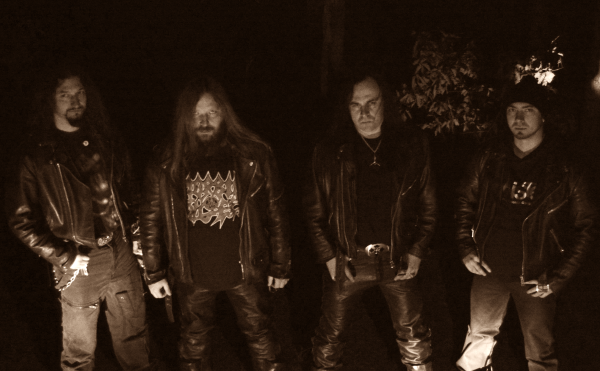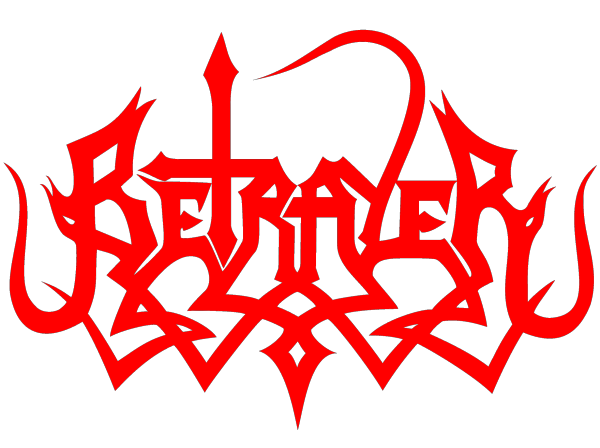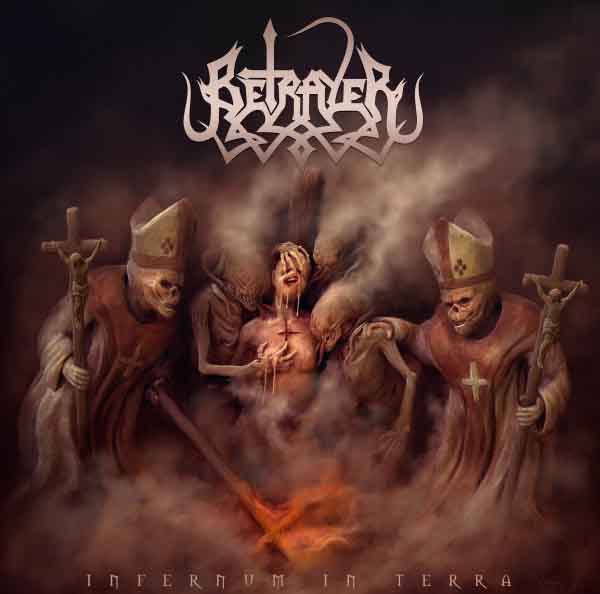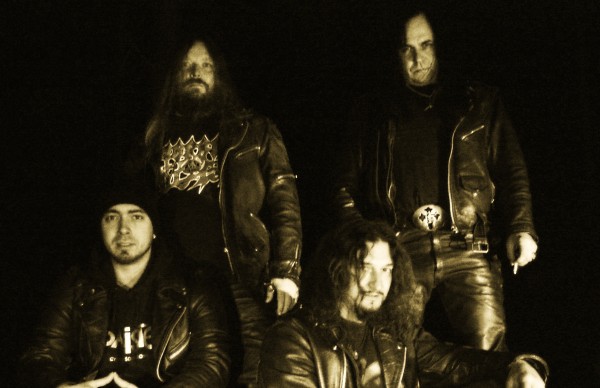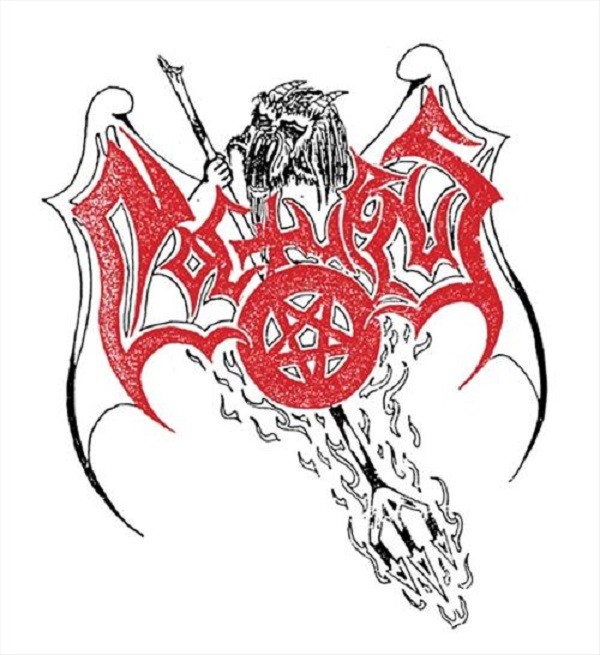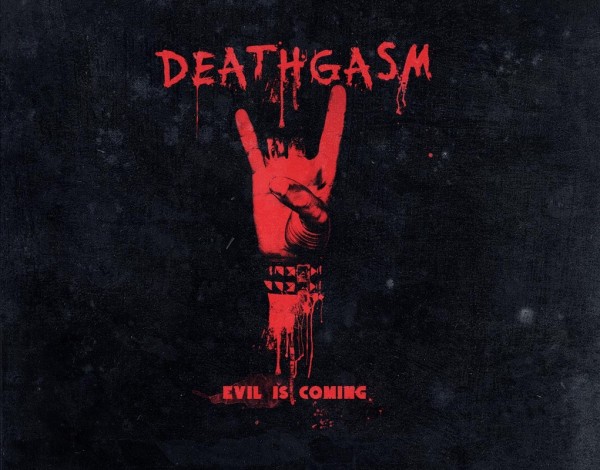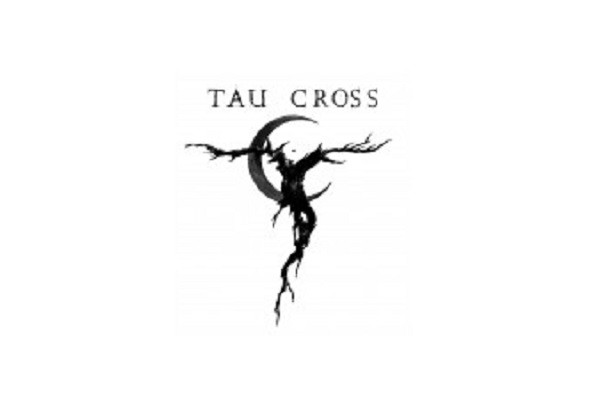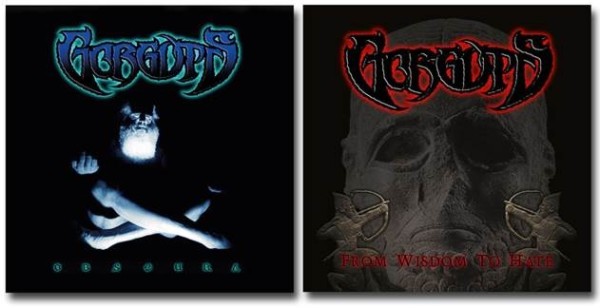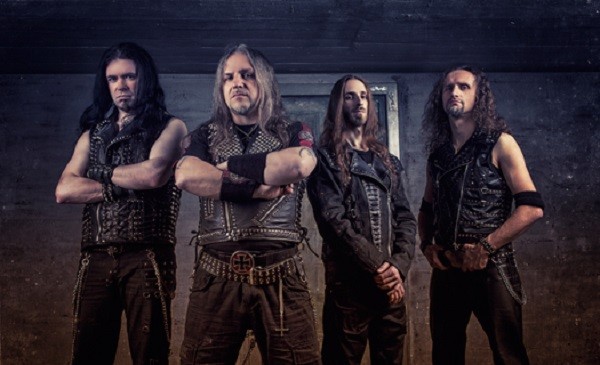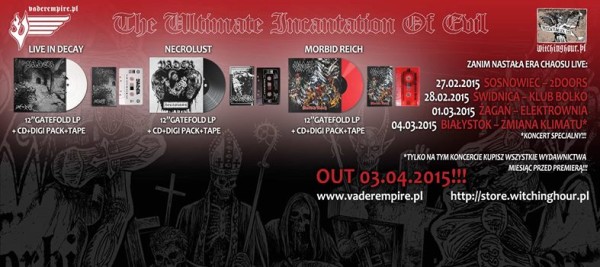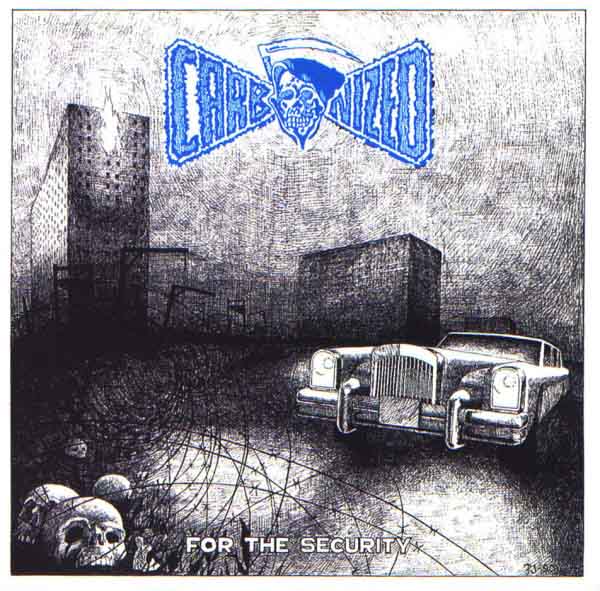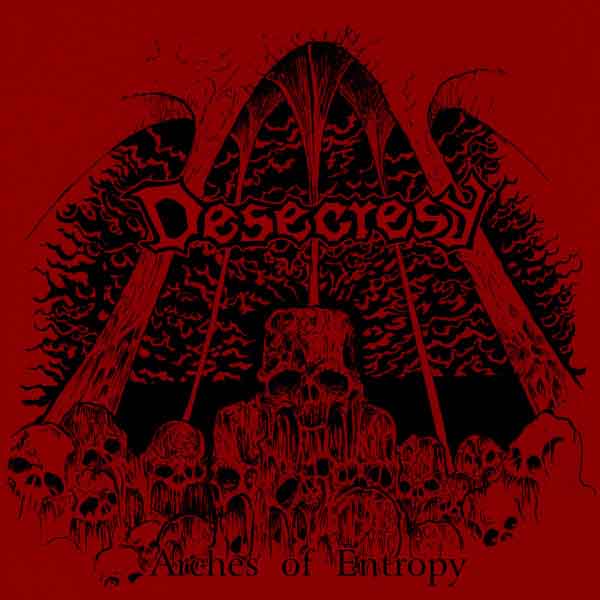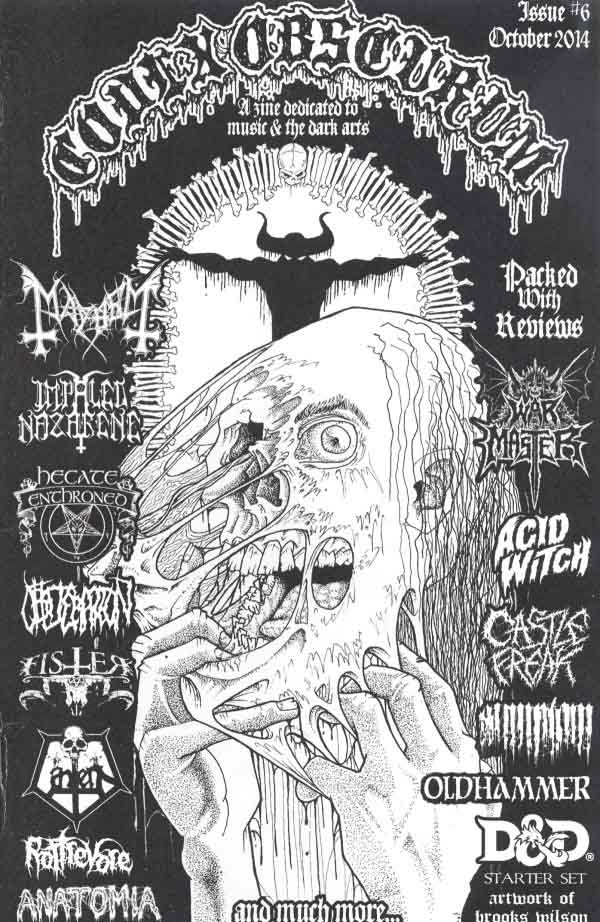Back in the hazy 1990s, many of us encountered a band from Poland who in the wake of Vader had been signed to Nuclear Blast and distributed in the United States. This band was Betrayer and the album Calamity, a work of high-speed metal in the Slayer-influenced style of Vader but also going in its own direction including a prescient use of melody, anticipating where death metal would go in the next decade. After two decades, Betrayer has returned with a split 7″ that is turning some heads for its aggressive integration of old school speed metal and death metal styles. We were fortunate to be able to sit down with mastermind Berial over a cup of hot blood and discuss Betrayer and the exciting possibility of new material…
When was Betrayer formed? How many demos did you put out? How did you get signed to Nuclear Blast?
Betrayer was formed in 1989 as a thrash metal quartet and as such, in 1990, recorded its first demo “Forbidden Personality.”
The same year there was a change in the line-up. I joined the band as a new bass guitar player shortly after splitting with my previous band Slaughter. I also took over the space behind a microphone. Since then Betrayer started drifting towards stronger and more extreme sounds. That was a turning-point and the beginning of a new era for the band.
Consequently in 1991 Betrayer released their second demo “Necronomical Exmortis”. It happened to be the real killer those days. One of the biggest metal magazines of that time in Poland, Thrash’em All,ranked it second in the category “Album of the Year.” Betrayer hit #4 in “Band of the Year” category. To this day the release is regarded as one of the milestones for Polish death metal music. This is how, I guess, we got signed to Nuclear Blast… Hard work, great gigs, loads of enthusiasm and energy with remarkable music art on top…
Where was “Calamity” recorded, and were these new songs or songs from the demos? What were your musical influences at the time?
Our debut full album Calamity was recorded at Modern Sound Studio in Gdynia, Poland. It was the best option at that time. Really modern and open for new trends in music so most of the reputable bands in Poland cooperated with them. “Necronomical Exmortis” was made in CCS Studio in Warsaw, which was the choice of many Polish stars, not only those in the metal stream. That was the first experience of working with a professional studio and the first official release for Betrayer. “Forbidden Personality” was different, more of amateur and self-made production.
Influences? Everyone had their own and not all were strictly death metal ones. All of them put together, however, made us what we happened to be…
Was it difficult to record and release at that time, just a few years after the political changes in Poland?
I don’t know if that was more difficult than today. I do not even know if political changes had anything to do with those difficulties. Those were different times, times of rebellion and discovering new options and possibilities. Metal underground, and actually all music underground in general, was strong and buoyant in Poland at that time. With Calamity which turned to be a milestone in Polish death metal history, were lucky to be on the top of the ladder, arm in arm with another polish legend, Vader, when the changes turned to be in favor of the musical revolution which opened new horizons and roads of going worldwide.
Finally we were able to spread the power of Polish extreme music all over the world. This also gave us the opportunity to share stages with bands like Morbid Angel, Deicide, Cannibal Corpse, Carcass, Death and too many others to count… Fantastic times!!!
Has Betrayer been on hold since that time, and are there are any other recordings people outside of Poland have missed out on?
We split up in 1994 shortly after releasing our debut album. It was nothing but a huge disappointment for us and the crowd of metalheads devoted to Betrayer. Only years later we learned that Betrayer had been well noticed in so many corners of the world. Instead of going on tour promoting such a great album as Calamity really was and pushing forward, we fucked it up. What a waste… Personal shit, you know… but it’s too late to moan now, isn’t it? I was so pissed off and consequently totally dispirited that I decided to stay away from the stage. In 2012, after nearly eighteen years of non-existence, demons of my inner self decided to remind me who I am and what I live for. There was no other option… Betrayer had to come back to life… and no, you didn’t miss any new recordings, except the split you know of.
You recently released a split with Neolith. What was it like recording this? Why release now?
From the very beginning we didn’t want to built our resurrection on the old stuff so instead of brushing up the songs from the past we decided to concentrate on making completely new material and release a new album. We didn’t want to, however, wait too long to announce to the world that we are back on the road. That’s why we decided to release one of the new tracks on the split. Same was with live appeariances. Initially we planned to do so after releasing the new album but for aforementioned reasons as well as unstoppable craving for going onstage we had to change the assumptions. In summer 2013, Betrayer appeared at Ragnarock Open Air Festival in Germany followed by a series of gigs around Poland. Obviously next to the new songs we performed some of the old ones too. The feedback was so great that in 2014 we were invited to play as a main support for a death metal legend Obituary in the only concert in Poland. Really good feeling and immense motivation, you know.
The Betrayer track on the Neolith split, “Beware,” shows more of an aggressive style and speed metal influence, with less death metal of the fast strumming variety. What motivated this change? Does this show a new direction in your music?
I wouldn’t say that there is a distinct change in Betrayer’s music in general. “Beware” is a song I would put somewhere between Calamity and the earlier “Necronomical Exmortis” demo, and I agree it’s kinda melodic at moments. The split features “Beware” just because this was the only song that we had ready to go at time the opportunity to release came. You might notice that it was not even finally mastered. Be forewarned that this song does not give justice to the whole new stuff …so do not be misled! Betrayer definitely stayed faithful to the death metal genre! You will see it yourself soon!
The question everyone is dying to know… (a) Will there be another Betrayer album? (b) are there any negotiations to re-release Calamity so a new generation can discover it?
Sure it will! I’m proud to announce that our new album Infernum In Terra will be released on March 18th, 2015! The music was mastered in Hertz Studio which cooperated with such bands as Vader, Behemoth, Decapitated or Hate in the past… and I tell you, this is a real good piece of death metal, no doubt about it! We are exteremely satisfied and hope you will be too… and yes, Calamity will also be re-released, just a little bit later! Sounds good, doesn’t it? It looks like it’s gonna be a good year for Betrayer.
How do you describe the music of Betrayer? When you write music, what ideas do you aim for?
Well, it’s the same old Betrayer I reckon. Maybe a bit heavier but still drifting on the old school death metal wave. This is deeply rooted in our mentality and our hearts and truly defines the way we live, think, feel and create at the moment.
Ideas? Hmm, pretty same as before. Music, you know, is the way to express yourself with some kind of ecstasy which you try to give away and infect others with it. When it comes to lyrics and the message, it’s kind of my personal thoughts and feelings about the systems that our existence is implicated in. Especially the religious one, full of contradictions and hypocrisy… you might say “nothing new” but in that context Polish society is deeply premised on that. All this blind glorification of the institution of the Catholic Church as well as other creeds makes me sick and contemptuous. This is what I mainly speak out against.
It seems that everyone knows Poland these days with Vader, Graveland and Behemoth having become popular. What else are we missing out on? You can include both musical and non-musical items!
Oh,yes… Vader… indisputable pillar of the Polish death metal scene! I happened to be the part of the crew for a short period of time back in the 90s. Behemoth… yes, no doubt about it… true gods on the firmament of black metal music world! I’m not too familiar with Graveland, but talking about the extreme music stuff you missed out at least astonishing Decapitated to start with or Hate…
How should people learn more about Betrayer and your own personal (Berial) musical projects? Where do they go to hear the music and keep track of news from the band?
Definitely by reaching our albums and staying tuned to all oncoming news on our web page or facebook profile. There are no other projects in my life at the moment. Betrayer is the only and one that gives me strength and makes me survive in this world of misery.
I’m pleased to hear that in the past we were noticed and are still remembered in the United States with the real hope that we will keep it this way and be honoured to visit your vast lands in future!
7 CommentsTags: behemoth, betrayer, death metal, poland, vader
